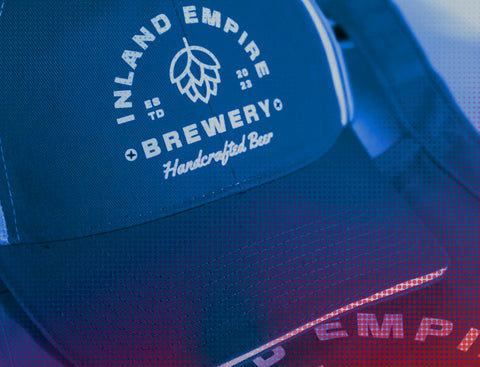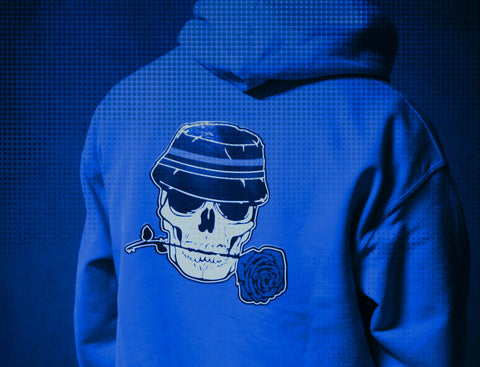Do you have a side hustle that is looking to branch out into hats? Or are you a business looking to add to your team’s work uniform or office apparel by adding your logo to a selection of hat types? Making your own custom hats can boost your brand visibility, give you a sense of cohesion for your team or simply give you a new hobby and creation to enjoy!
In our guide on how to make custom hats, you will learn some of the top tips to choosing the right design, paneling, materials and assembly. With endless potential and with hats never really going out of style there’s so much to enjoy when it comes to making custom hats. Read our guide below.
Table Of Contents -
- Hat Style
- Design Concept
- Sizing
- Material Selection
- Custom Decorations
- Quality Control
- Branding & Packaging
Hat Style
Doing your research during this phase is important. You can learn about all of the different styles and types of hats, such as baseball caps, snapbacks, bucket hats, beanies. This will determine where your design can be placed, what material you’re going to make your hat from and will be hyper focused around the target audience.
Design Concept
If you’ve ever worn a hat that was scratchy and uncomfortable, then you’ll know how it feels for the design concept to not be taken care of properly. Putting your time and energy into crafting the perfect design is important - this is what is going to make your brand stand out amongst the crowd.
Start by defining your hat’s design concept, including style, color and any logos or artwork that you want to incorporate. Think about the series of panels, fabric styles, logo and label placement. You also need to consider smaller designs like the closure method. These intricate details are what can make or break a custom hat design.
Sizing
Once you have your design and the material of your hat - and the blanks ready to be applied - the sizing of the hats that you choose is important as this will depend on who you are selling or giving the hats to.
Make sure to accommodate different head sizes to provide your customers with as many options as possible. You should also consider using different elements like adjustable straps or even stretchable materials for flexibility.
Material Selection
There are so many choices that you can opt for, which should be determined by the style and design of your hat, cap or beanie. It will also depend on what time of year you envision your hats being used.
For example, if you want an all-season hat, then a cotton/poly twill may be the most suitable choice. Or if you’re looking for something extra cozy, 100% cotton is the right option. But for sports caps or hats to be worn in the summer sun, poly-mesh may be a better preference.
Consider sourcing blank hats from specialized retailers to ensure you’re getting the best quality at the best prices, while having the right fits for your target audience. You can buy them in bulk to keep costs down.
Custom Decorations
After you’ve chosen the best hats to suit your needs and you have your design, you need to think about the way you’re going to apply your design. There are lots of different print methods that you can choose, such as embroidery or screen printing.
Our personal favorite is DTF transfers due to their high quality, vibrancy and long term durability. The print method you use will depend on the intricacy of your design, the effect you want to achieve and the quantity of hats that you want to produce over time.
Some businesses, side hustles and hobbyists may even use custom patches to produce their designs and apply them to their custom hats. There are lots of print options for you to choose from when you’re learning how to make custom hats. We recommend having a few test fabrics to see what the right design, durability and vibrancy looks like for each one before you commit.
Quality Control
Implement a quality control process to inspect each hat for defects, ensuring they meet your standards before you sell them or hand them out to your staff or potential customers. The quality and meticulousness of any apparel or product that mentions your brand name will be a reflection of your business, side hustle or skills as a hobbyist. Ensure you have a seamless QC process to maintain the highest standards possible.
Branding & Packaging
Branding and packaging isn’t just about what you’re wrapping your hats in when you’re giving them out or selling them. It is also about labeling or tagging your items with your brand logo and information to ensure professional presentation at all times.
You can do this in a similar way to printing onto your hat. In fact, we sell transfers for neck labels right here at DTF Transfers to help you on your way.
Conclusion
From a small scale, through to mass production, there are lots of ways you can make custom hats. Perfecting your design, the materials, the quality of your hats and everything down to your labeling will ensure brand consistency and help people to remember you.
The perfect giveaway at trade shows and expos, as well as the ideal choice for merchandise, custom apparel or simply a new opportunity to showcase your hobbyist skillset, creating your own custom hats has never been easier.
We hope that you’ve found our guide on how to make custom hats useful. Want to explore other types of apparel? Take a look at our guide on how to make custom t-shirts and how to make custom tumblers.



